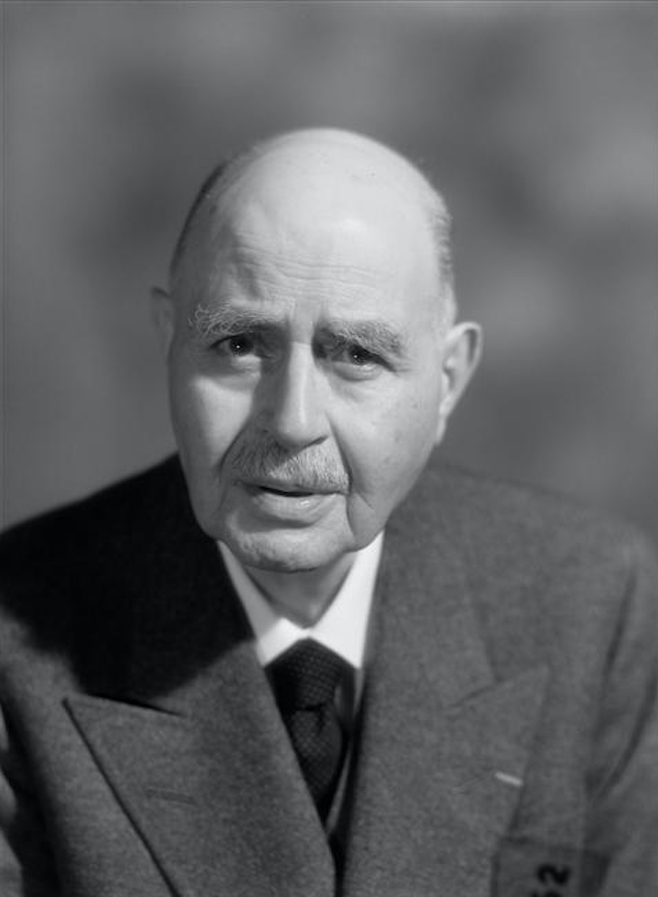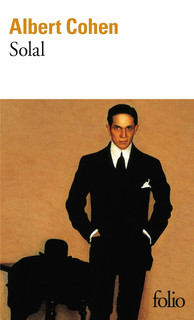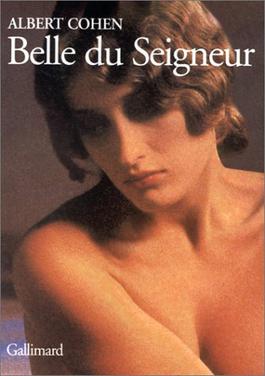From the Orient to the West: Shaping Sephardic Identity in Albert Cohen’s Novels.
By Ruth Malka1
Albert
Cohen (1895-1981)
Photo: Studio Harcourt (1968)
Whereas nowadays, because of the European Union, we see Greece as part of the Western world, this was not the case back in the time of Albert Cohen. Born an Ottoman citizen in 1895 to a Romaniote father and a Judeo-Venetian mother, Albert Cohen spent his early childhood in the ‘Oriental’ Greek ghetto of Corfu, which was populated by two Sephardic groups: the Romaniotes and the Venetians.
The dichotomy between the Orient and the West strongly affected young Albert Cohen as he moved with his parents to Marseille, in the South of France, at the age of five, and lived there until he later left first to Geneva, to pursue his law degree, and then to Paris, for work. The Jewish population of both France and Switzerland were, at the beginning of the twentieth century, mostly Ashkenazi, and Albert Cohen’s family was an exception in their religious community.
However, in none of the four novels Albert Cohen wrote, Solal, Mangeclous, Belle du Seigneur and Les Valeureux, is the Ashkenazi population of France and Switzerland depicted.2 This tetralogy, which follows, like an anti-Bildungsroman, the main character of Solal, the son of the rabbi of Cephalonia, (Cohen confessed that he picked another Greek island because he did not want to attract tourists to Corfu), from his Bar-Mitzvah to his suicide, narrates his moving from his native ghetto as a teenager to Geneva, Paris, and Marseille where he attempts, unsuccessfully, to assimilate into the non-Jewish French and Swiss societies.

Panoramic view of parts of Old Town of Corfu as seen from Old Fortress. The Bay of Garitsa is to the left and the port of Corfu is just visible on the top right of the picture. Spianada Square is in the foreground. - Photo Source: Wikipedia: Marc Ryckaert (MJJR)
His work’s omission of the existence of these Ashkenazi communities that were indeed, to some extent, if not assimilated, at least well integrated in France and Switzerland, not only makes Solal the sole Jew in these two countries, but also shapes a fictional universe as ontologically binary. On the one hand, Solal, hailing from a Greek ghetto, is defined as the Jew, the Oriental, the Sephardi; on the other hand, the world he tries to enter is characterized as the West, Europe, and is populated by societies defined as Christian and Gentile. There are no more Christian Greeks in Albert Cohen’s Greece than there are Ashkenazi Jews in his France or his Switzerland.
While it is impossible to say why Albert Cohen shaped a binary fictional universe in this way, we can try to give an explanation of the consequences of such a situation: placing an Oriental character in the Western world emphasizes the status of foreignness of the Jewish people, embodied by Solal, in France and Switzerland, and stresses anti-Semitism.3 This notion is corroborated by the fact that the sole two Ashkenazi characters who, originally from Lithuania, make a brief appearance in Albert Cohen’s work, Jérémie Silberstein and his daughter Rachel, are shown in Berlin as hiding from the Nazis: they too are outsiders rejected by European culture. The depiction of an assimilated Ashkenazi community in Paris, Marseille or Geneva would not have allowed such a drastically drawn contrast between Jewish and European identities.
Solal leaves his native Orient for the West to escape a Jewish identity which he defines as a form of martyrdom: “Why was he a Jew? Why was he so unfortunate? At the age of ten he had still been innocent, eager, kind; but bitterness and restlessness had become his the day of the Jewish massacre.”4 Even though France is in the midst of the Dreyfus Affair – and the Cephalonian community is concerned about the fate of ‘the Alsatian’5– the teenager still thinks the West would allow him to grow as a free man. However, no matter how much he tries once there, his Oriental “black tufts of hair”6 set him apart from the pale-skinned local population and lead to his rejection:
Here he was, Solal; he arrived, loving them all. They replied, “Dirty Jew.” His hands were laden with roses and he held them out to them. They replied, “Dirty Jew.” The waiting-rooms, the police at night and the passport examined with distrust. “These people give me the shivers,” the grocer woman used to say.7
As much as his relatives who visit him frequently to remind him of his Jewish roots – particularly the five cousins who call themselves ‘the Valiants’, Saltiel, Michael, Mattathias, Mangeclous and Salomon – the French and the Swiss characters do not let Solal forget he is not one of them. Even at the climax of Solal’s success, when in Belle du Seigneur he achieves the important position of Under-Secretary-General of the League of Nations in Geneva, a job highly symbolic of a social integration in the West, a fellow politician recalls hatefully his Oriental identity: “What on earth did he do to manage to get himself appointed Under-Secretary-General? A Jew-boy born in Greece who now has French nationality, it’s enough to make anyone puke! Obviously, the Jewish mafia!”8
Torn between the Sephardic origins he could not disown and a Western identity he could not embrace, Solal is incapable of either returning to live in Cephalonia or continuing to live in Europe. Although his job at the League of Nations has made him a wealthy man, he never lives in a property that belongs to him, demonstrating that the Jewish people in the West will be forever ‘wandering’. Even if this exile seems golden, Solal moves from one place to another, from a hotel to a rented place, from the Ritz to the Bristol, and so on.
Whereas Solal does not accept his duality and attempts to evade himself by running from one location to another, the only characters who give him the feeling he so eagerly seeks, that of being loved within the society that excludes him, are his non-Jewish lovers. Nevertheless, even if these women evolve over the course of their relationships with Solal, thinking or saying anti-Semitic comments at first – “Filthy Jew! she said”9 – but changing their minds with time, none of them can manage to give him a new identity.
Although the names of the three most important characters Solal falls in love with, Aude, Adrienne and Arianne, all begin with the first letter of the alphabet, symbolizing like the name of the first man, Adam, potential new beginnings, the failures of these relationships illustrate the inability of the West and the Orient to merge. The last of these love stories, culminating in the suicide of Solal and Arianne together at the end of Belle du Seigneur, corresponds to the paroxysm of the Sephardic character’s inability to assimilate into the West. While the name ‘Arianne’ sounds like the ‘Aryan’ race, – and the last chapters of the novel are set in the 1930s, when Nazism is rising in Germany – it is precisely this relationship that brings both the Jew and the ‘Arianne’ to death, illustrating the Jew’s definitive failure to become European, and the West’s absolute collapse into destruction, exemplifying the fact that the rejection of the Jews has led dramatically to Europe’s self-ruin.
The failure to be a Jew in the West is not only expressed in the story narrated in Albert Cohen’s novels, but also in the literary traditions the tetralogy echo. Whereas the Bildungsroman is specifically a European genre, presenting the reader with a young boy who grows into a wise man through a journey, Solal’s travels to the West lead him to commit suicide, epitomizing the failure of a Jewish character to fulfill the European narrative arc of a novel. This failure is also implicit in the parallel drawn between the Sephardic Orient and the Greek myth that gave birth to non-Jewish Western civilization: Solal comes from Cephalonia, an island right next to Ithaca. While Odysseus comes home safe and sound at the end of his journey, Solal dies abroad without ever seeing his island again, and never connecting to the most famous of Europe’s founding myths and the literary roots of Western literature.10
Although we can conclude that Albert Cohen’s novels convey the impossibility of being Jewish in the West, his books also feature, in the background, a type of Jew different from Solal: his five Cephalonian cousins, ‘the Valiants’: Saltiel, Michael, Mattathias, Mangeclous and Salomon, who are all proud to belong to their ghetto. Contrary to Solal, hero of an anti-Bildungsroman who evolves from hope to despair over the course of the novels, not only do the Valiants’ personalities remain the same, but they never question their identity nor try to assimilate to the West, even though they visit the same cities as Solal since they constantly attempt to bring him back to Cephalonia and his Sephardic roots.11 Could we say that the ‘Ghetto Jew’ appears to be a solution, in Albert Cohen’s novels, to Solal’s quest for identity? Indeed, but his quest also tells the story of a paradise lost. Cohen wrote Belle du Seigneur after the Second World War, well aware that the identity of the Sephardim of the Greek ghettos had been eradicated during the Holocaust.
1 Ruth Malka is a PhD student at McGill University in French Literature and Jewish Studies. Her PhD dissertation deals with Louis-Ferdinand Céline’s anti-Semitism, and she extends her research to the Jewish literary answers to hatred.
2 For additional analysis regarding the uniqueness of Albert Cohen’s novels among the Jewish literary work of his time, refer to the article written by Norman David Thau entitled “Hapax Solal, ou l’inexistence d’un roman juif français entre les deux guerres” published in Alain Schaffner (ed.), Albert Cohen. Colloque du Centenaire, Villeneuve D'Ascq: Roman 20-50, 1997, pages 87 to 110.
3 Anti-Semitism increases throughout Albert Cohen’s work, and in the last novel, Belle du Seigneur, Solal foresees the Holocaust. For further analysis of this question, refer to the article written by Alain Schaffner entitled “Le cauchemar de Solal’’ and published in Marc Dambre (ed.), Mémoires occupées, Paris: Presses de la Sorbonne Nouvelle, 2013, pages 39 to 45.
4 Albert Cohen, Solal of the Solals, translated from the French (Solal) by Wilfrid Benson, London: Putnam's, 1933, 318 pages, p. 44.
5 Solal of the Solals, p. 37.
6 Solal of the Solals, p. 44.
7 Solal of the Solals, p. 123.
8 Albert Cohen, Her Lover, translated from the French (Belle du Seigneur) by David Coward, London: Penguin, 2005, 992 pages, p. 51.
9 Her Lover, p. 330.
10 For a more complete analysis of the fact that the character of Solal doesn’t integrate into the Western society, but that Albert Cohen’s work is considered French literature, refer to the article written by Philippe Zard entitled “Albert Cohen: la question séfarade. Convergence et malentendus’’ published in Contemporary French and Francophone Studies, 11:2, 2007, pages 265-276.
11 For an in-depth analysis of the different Jewish characters’ identities in Albert Cohen’s work, refer to Maxime Decout, Albert Cohen: les fictions de la judéité, Paris: Classiques Garnier, 2012, 371 pages.
Copyright by Sephardic Horizons, all rights reserved. ISSN Number 2158-1800



